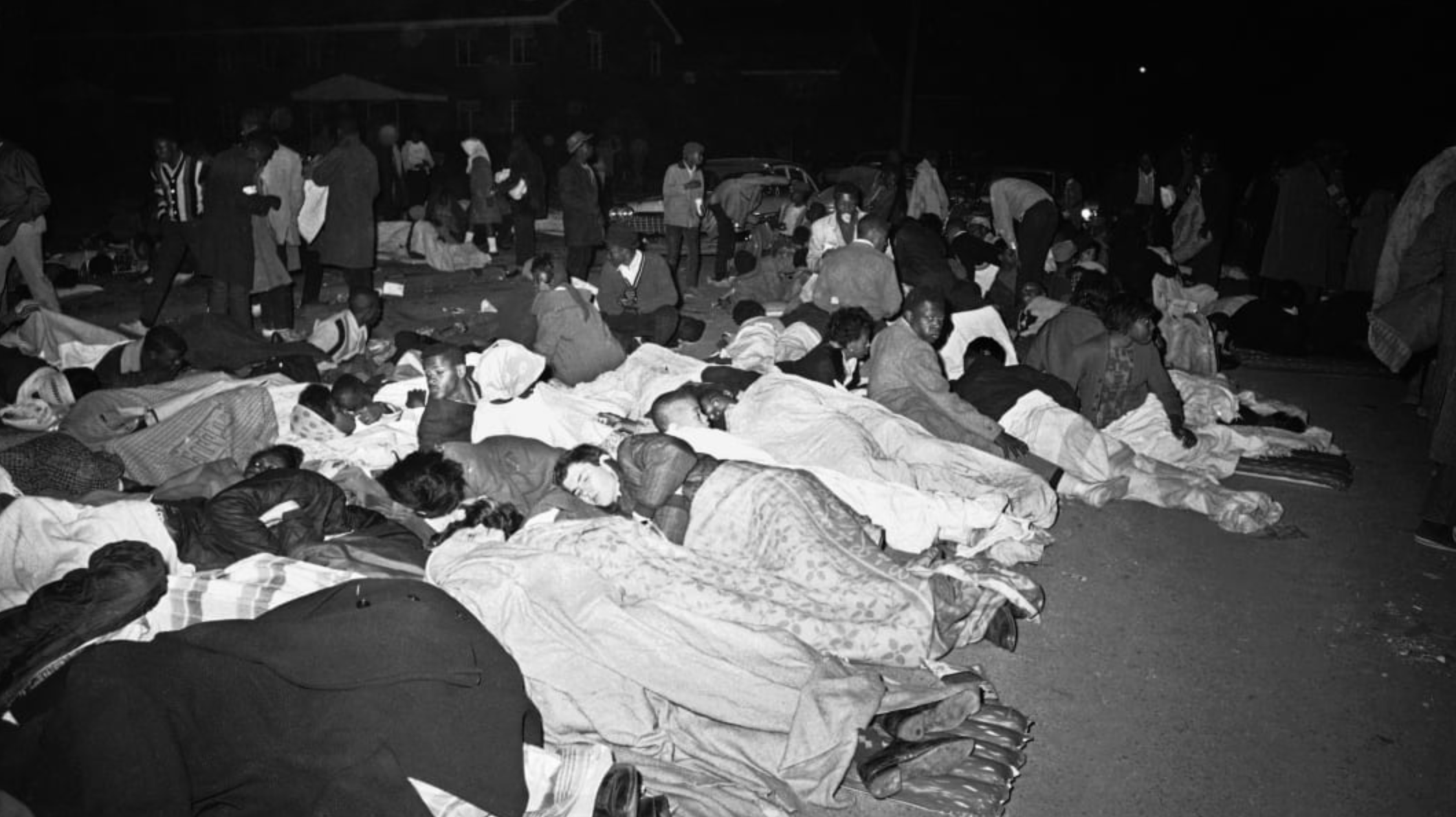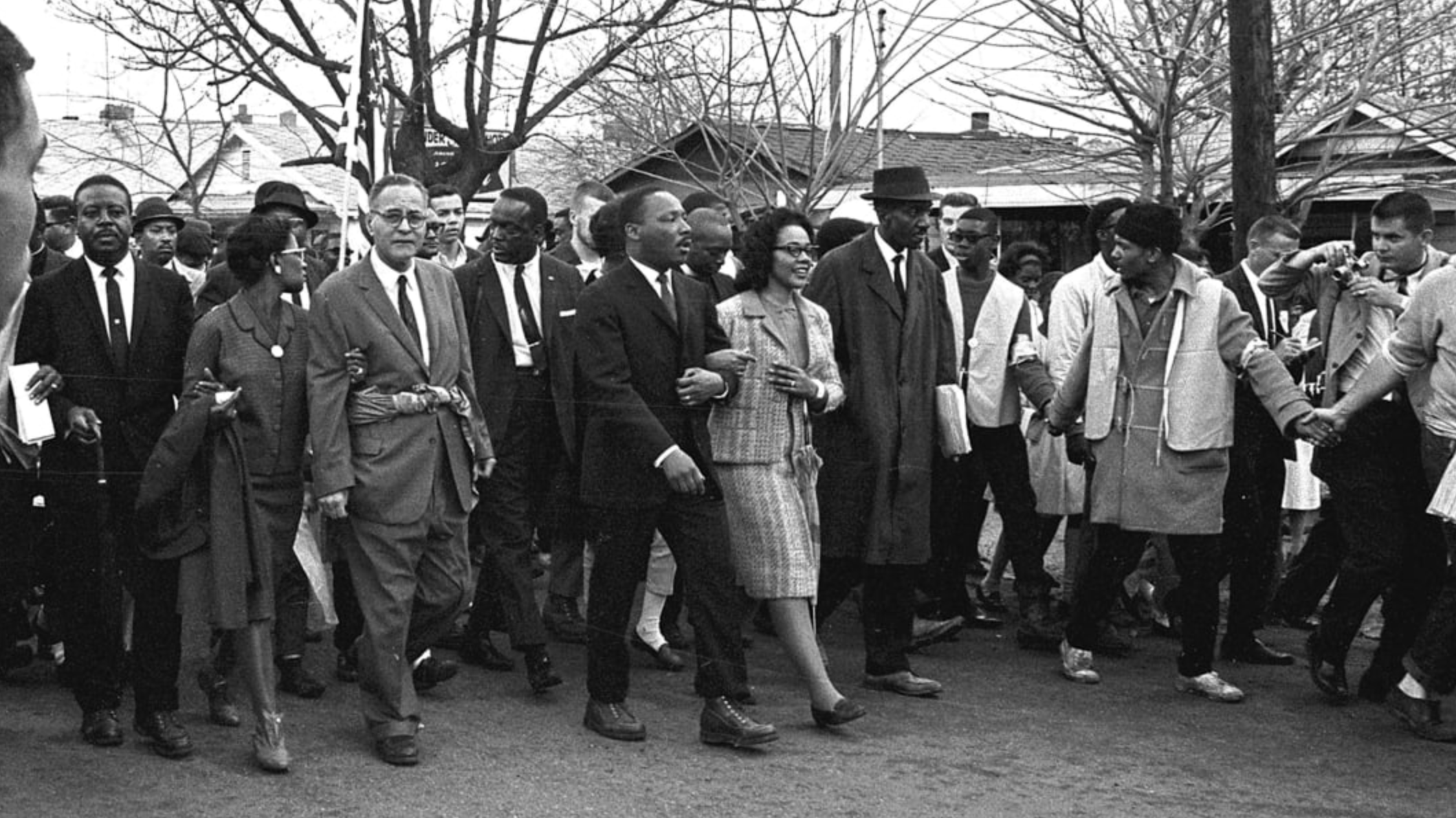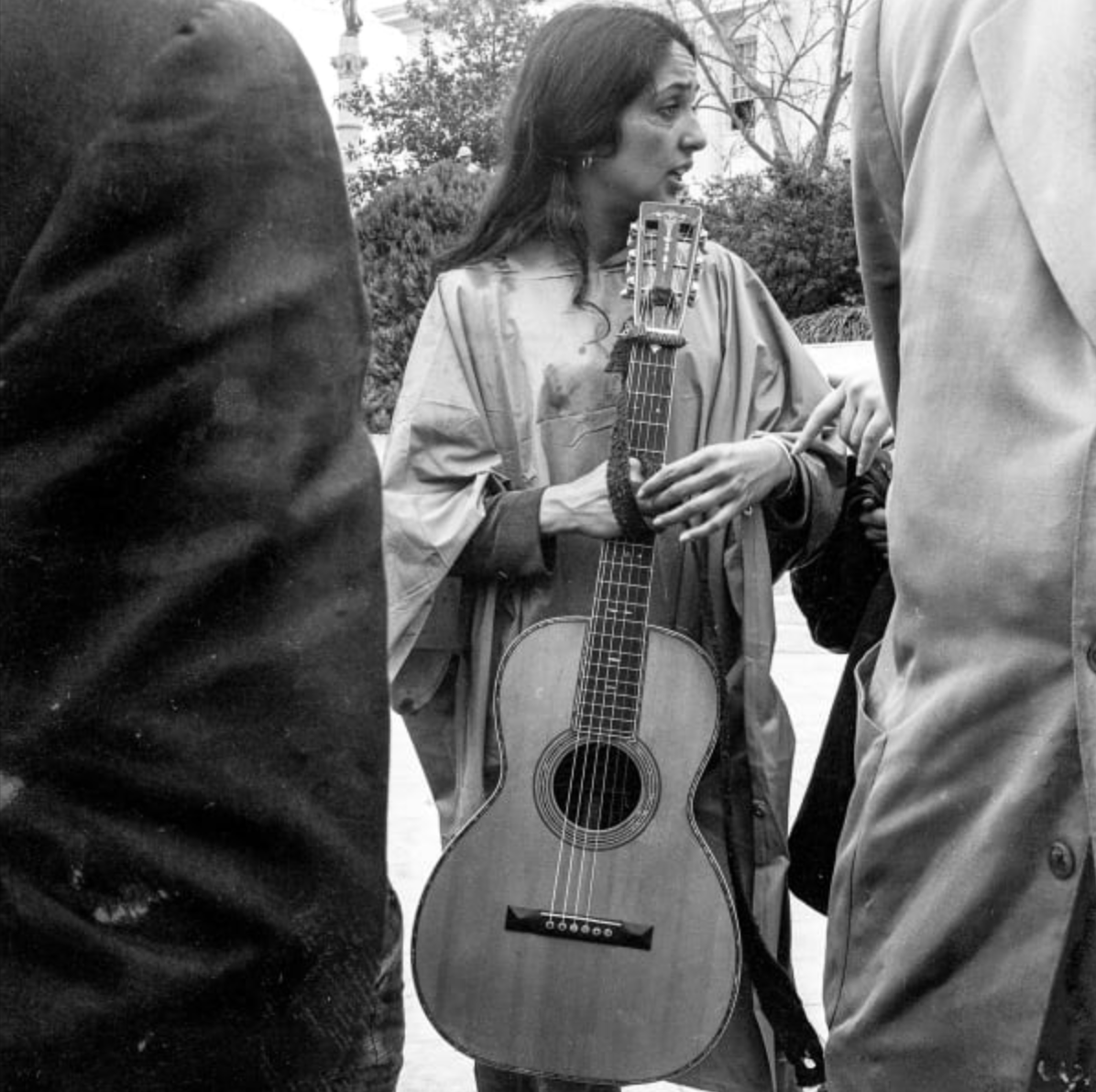From Selma to Montgomery
The Rev. Martin Luther King Jr. speaks to protesters in Montgomery, Alabama, on March 25, 1965. About 25,000 people had marched there from Selma, Alabama, to protest discriminatory practices -- such as poll taxes and literacy tests -- that prevented many black people from voting in the South. It was the last of three marches that month. Stephen Somerstein/Getty Images
A hearse carries the body of Jimmie Lee Jackson, a black deacon and civil rights activist who was shot by a state trooper during a voting rights march in Marion, Alabama, in February 1965. Jackson's death was a catalyst for the first Selma-Montgomery march. Bettmann Archive/getty images
About 600 people began a 50-mile march from Selma to the state Capitol in Montgomery on March 7, 1965. But as they descended to the foot of the Edmund Pettus Bridge in Selma, state troopers used brutal force and tear gas to push them back. The incident is now known as "Bloody Sunday." AP
State troopers swing billy clubs to break up the march on "Bloody Sunday." In the foreground, activist John Lewis is being beaten. He suffered a fractured skull. Lewis is now a US congressman. AP
Two days after "Bloody Sunday," a second march started in Selma. This time, the crowd turned back at the bridge when it met a barricade of state troopers. AP
Marchers kneel in prayer after being stopped by state troopers in Selma. Bettmann Archive/getty images
Doctors attend to James Reeb, a white minister from Boston who was attacked by white men for taking part in the demonstrations. He died on March 11, two days after he was beaten. Bettmann Archive/getty images
Protesters sleep on a Selma street on March 11. AP
US President Lyndon B. Johnson, seen here on March 18, 1965, advised Alabama Gov. George C. Wallace that he would federalize the Alabama National Guard if Wallace were "unable or unwilling" to call out the Guard to protect marchers. The next day, Wallace sent a telegram to Johnson asking for help, saying the state did not have enough troops and could not bear the financial burden of calling up the Guard. Bettmann Archive/getty images
King, center, walks with his wife, Coretta, during the third march on March 21. About 3,200 people marched out of Selma under the protection of federal troops. Robert Abbott Sengstacke/Getty Images
Marchers walk past a young white man holding a Confederate battle flag. Bettmann Archive/getty images
Protesters carry American flags during their march to Montgomery. Robert Abbott Sengstacke/Getty Images
Marchers walk through mud. The protest had grown to about 25,000 people by the time it reached Montgomery. Bill Johnson/The Denver Post via Getty Images
Singer Joan Baez, who entertained activists with music before the march, stands in Montgomery on March 25. Charles Shaw/Getty Images
King speaks to the crowd in Montgomery. "They told us we wouldn't get here. And there were those who said that we would get here only over their dead bodies," he said during his speech. "But all the world today knows that we are here and that we are standing before the forces of power in the state of Alabama saying, 'We ain't going to let nobody turn us around.' " It was also during this speech that King famously said "the arc of the moral universe is long, but it bends toward justice." Stephen Somerstein/Getty Images
Marchers arrive at the Alabama State Capitol in Montgomery. A few months later, President Johnson signed the Voting Rights Act, which ensured that everyone's right to vote would be protected and enforced. Bettmann Archive/getty images


















